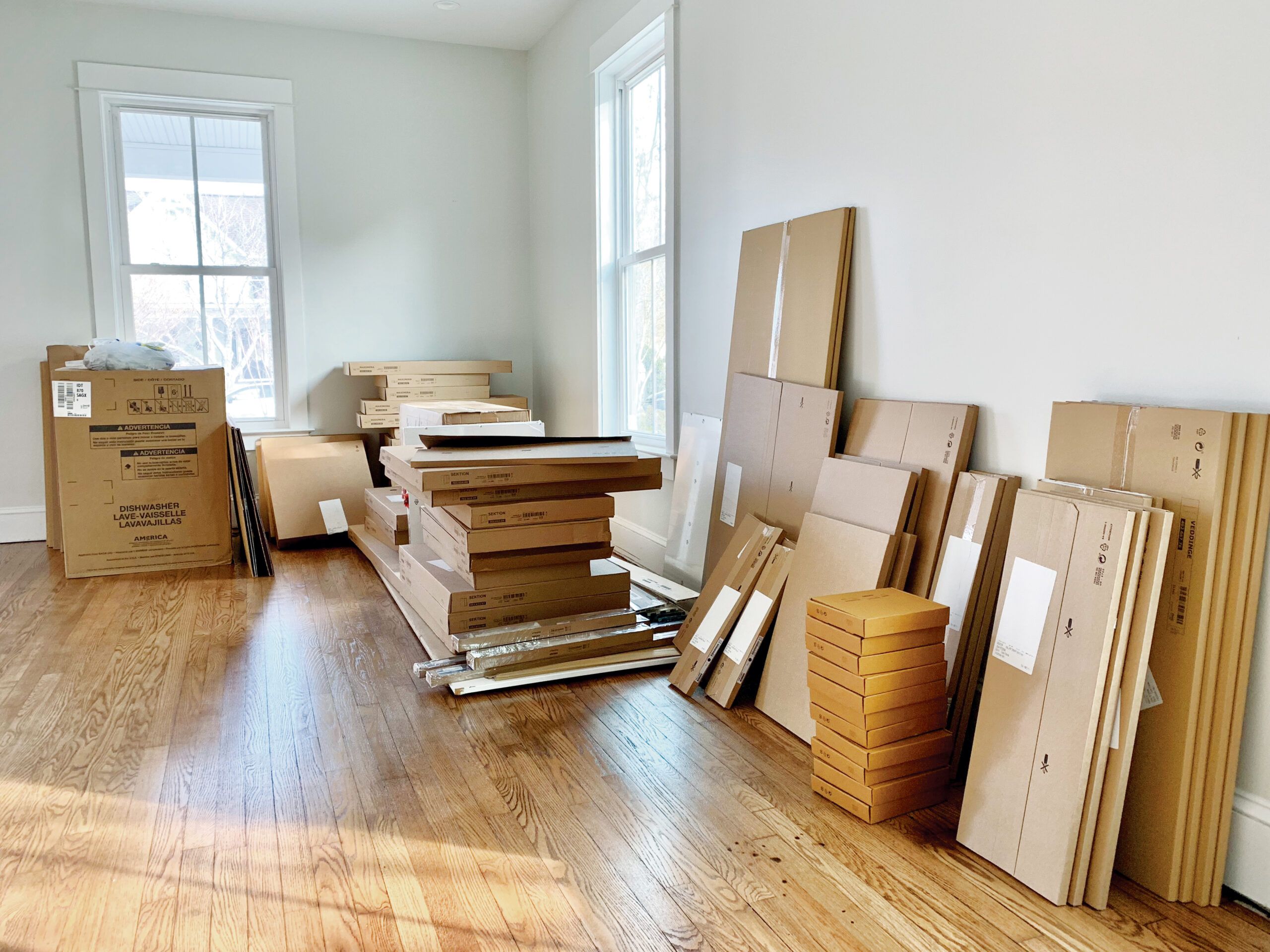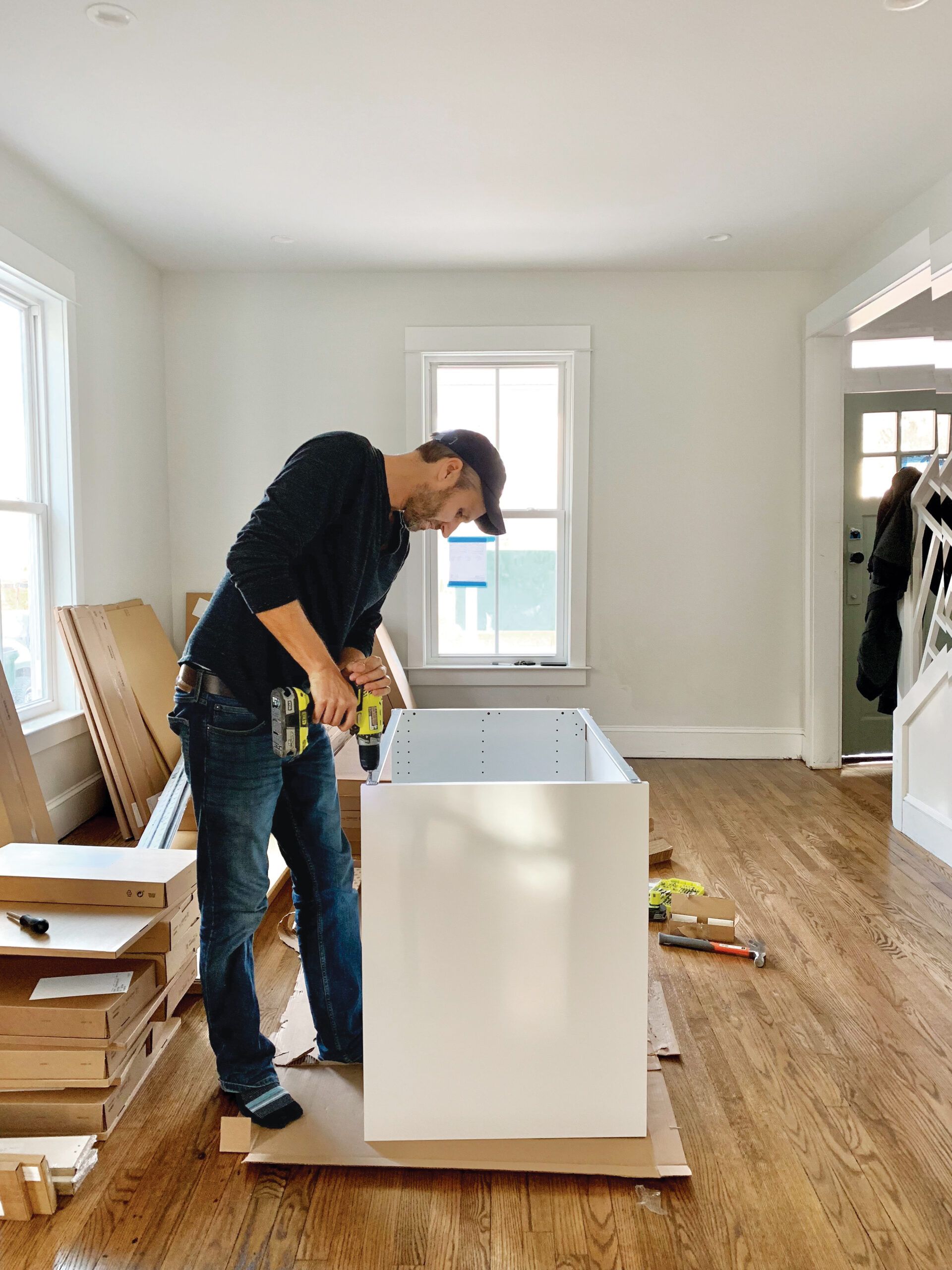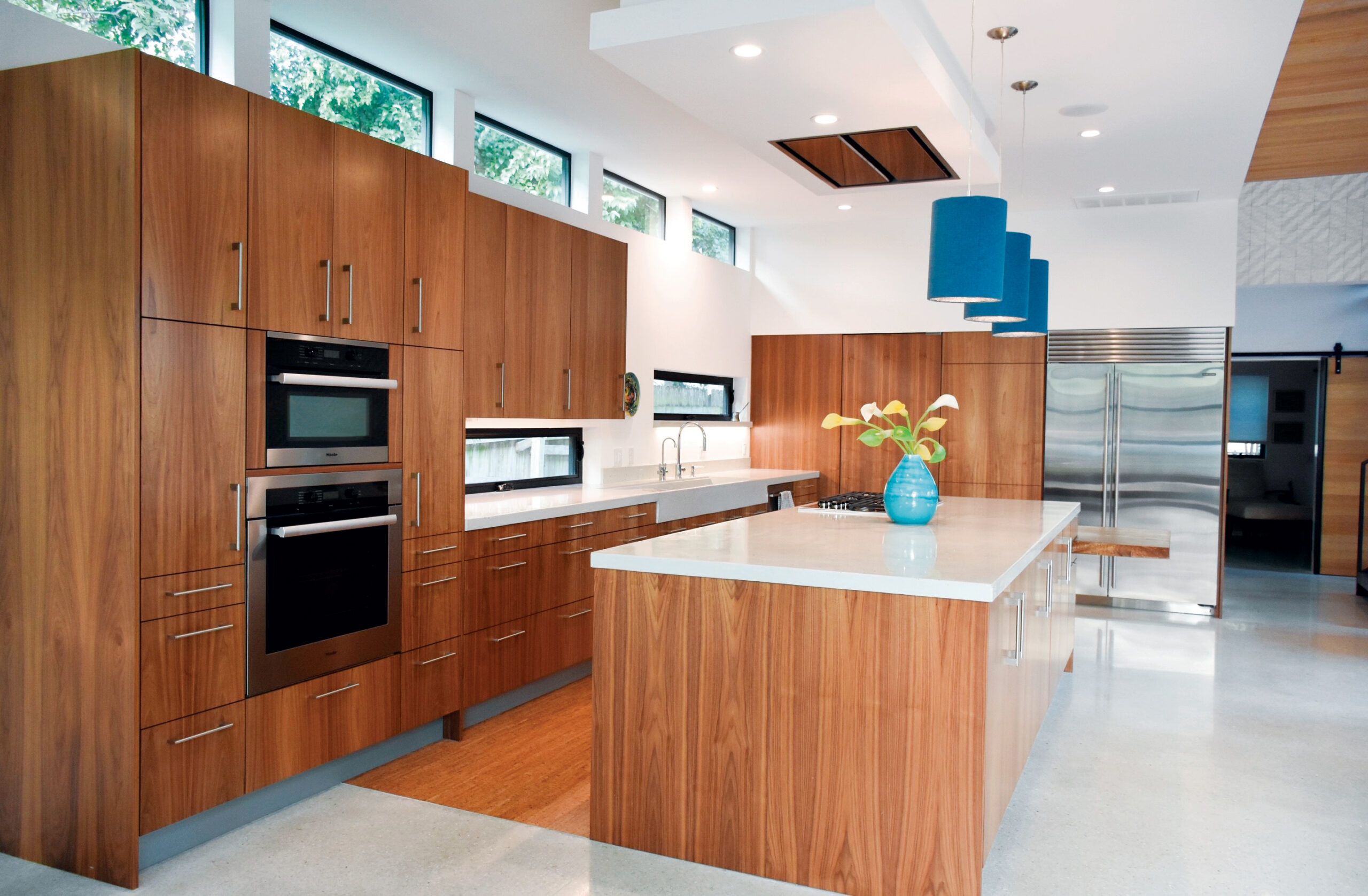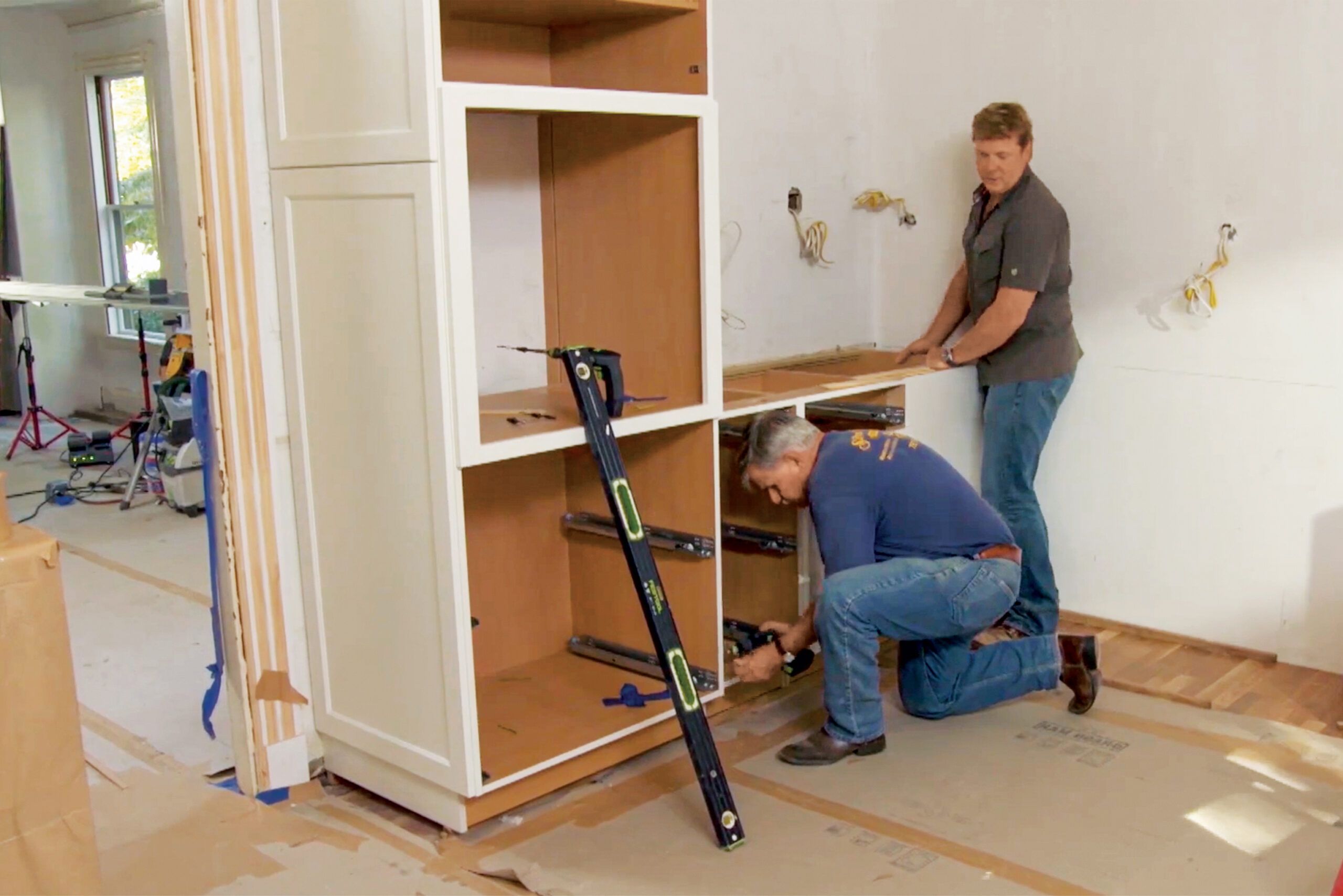Ready-to-assemble (RTA) cabinets are a cost-effective and DIY-friendly option for homeowners looking to upgrade their kitchen. When your RTA cabinets arrive, you’ll need to be prepared for the assembly process. This guide walks you through assembling RTA cabinets, from preparing for delivery to installing them in your kitchen. With the right approach, you’ll achieve professional-looking results on a budget.
4 Tips for Assembling RTA Cabinets
Before starting the assembly process, you must understand some key tips to make your RTA cabinet project run smoothly. These cover everything from delivery preparation to setting up your work area.
1. Prepare for Delivery

When your RTA cabinets arrive, make sure someone is home to receive the shipment and have a designated area to store the boxes. Upon delivery, take inventory, as most manufacturers allow a window of about five days to report any damaged or missing items.
As you unpack, document any issues by taking photos of damaged parts and noting missing pieces. If you’re not planning to assemble the cabinets immediately, store them in a climate-controlled area to protect them from temperature fluctuations.
TOH Pro Tip: “Ask the manufacturer how long you have to report a damaged part once you accept delivery. You don’t want to get stuck with a dinged cabinet door or drawer because you waited too long to inspect every box.” –Tom Silva, General Contractor.
Preparing for delivery can prevent unexpected delays or issues, making for a hassle-free assembly process. Familiarize yourself with any special delivery instructions the manufacturer may provide for a more seamless delivery.
2. Get Organized
Stay organized when assembling RTA furniture. Sort your cabinets by type, grouping together the upper cabinets with the right parts and the lower cabinets with each other. This allows you to assemble similar cabinets, making the process quicker as you become familiar with the construction.
Before starting, watch video tutorials specific to your cabinet brand and model. This visual guidance can be helpful, especially if this is your first time assembling furniture. Lay out all parts and hardware for each cabinet on a work surface before beginning assembly. Remember that patience is key—you’ll become faster and more efficient with each cabinet you build.
3. Gather Your Tools
RTA cabinets usually only need basic tools, typically including a multibit screwdriver or hex-key wrench. Review the assembly instructions to make sure you have all the necessary tools. While it may seem better to use power tools to speed up the process, avoid using an impact driver, as it can easily strip screws.

If you choose to use a drill/driver, adjust the clutch to prevent overtightening, and purchase a hex bit if necessary for increased efficiency. Some cabinet systems may require yellow carpenter’s glue and a stapler or pin nailer for certain parts.
A non-marring rubber mallet is a great tool for assembling box parts without causing damage. However, you need to follow the manufacturer’s instructions precisely. As TOH home builder Charlies Silva advises, “Unless they’re specifically called for, don’t add brads, staples, or glue while assembling the cabinets—you’ll void the warranty that way.”
In addition to all the tools we’ve mentioned, having a tape measure, level, clamps, and safety glasses on hand makes for a smooth and safe assembly process.
4. Set Up a Work Area
Choosing the right workspace can impact your assembly process. Ideally, you should build the cabinets in the room where they’ll be installed—if your kitchen is already demoed, that’s perfect. Working at a waist-high table is more comfortable than assembling on the floor, but keep in mind that fully assembled cabinets can be heavy and difficult to move.
Protect your work surface and the cabinets by laying down a soft material like a moving blanket. This helps prevent scratches during assembly. As you complete each cabinet, label it with painter’s tape and a marker, correlating it to your kitchen layout plan for easy installation later.
A well-organized work area with adequate lighting and ventilation can make your project more efficient and accurate. Having all the tools and components within easy reach will help streamline the assembly process.
Custom Looks for IKEA Cabinets

IKEA cabinets offer a unique opportunity for customization. While buying replacement cabinet doors and drawers is common, IKEA allows homeowners to purchase cabinet boxes and then customize the look with doors and drawers from other companies.
These custom components are designed to fit IKEA’s system perfectly, with doors pre-drilled for IKEA hinges and drawers sized to fit the boxes. This approach opens up a world of possibilities for high-end options, including white oak and high-gloss metallic finishes.
If you take the customized route, remember that while the full overlay doors and drawer fronts will cover the frameless cabinet boxes from the front, you may need to order matching end panels and toe kicks for a more cohesive look.
Custom doors and drawer fronts for IKEA cabinets can be sourced from various suppliers, each offering a range of styles, finishes, and materials. Taking this step in planning helps your kitchen meet its functional needs and reflect your personal style.
Pro Advice for Installing Cabinets

Installing RTA cabinets yourself can stretch your budget. The installation process is generally similar to that of traditional cabinets, though some brands like IKEA offer their own mounting systems. We’ve compiled some expert tips for a successful installation.
Access the Walls and Floors
Before installing new cabinets, carefully remove the old ones, paying attention to where shims were used on the floor and wall. These shims indicate high and low spots that you’ll need to address during installation.
For floors that are out of level (more than one inch), screw down tracks of scribed filler strips parallel to the wall. This creates a level surface for all base cabinets to rest on. However, as Charlie Silva notes, “Most of the time, it’s faster to shim the base cabinets as you go.”
Addressing these elements will help your cabinets sit correctly and function properly once installed. Take time to check for other issues, such as wall studs and plumbing, which can affect the placement of your cabinets.
Use the Right Screws
Proper hardware matters quite a bit for a safe and secure installation. As Tom Silva notes, “A cabinet loaded with plates and bowls is very heavy. Unless you want that all to come crashing down, use 2-1/2-inch deck screws with washers or pan-head cabinet screws. They’re stronger and provide better support than regular deck or drywall screws.”
Using the correct screws provides peace of mind, knowing your cabinets are securely anchored. This is especially important when installing upper cabinets that will hold significant weight.
Install Upper Cabinets First
Starting with the upper cabinets makes the installation process easier, as you won’t have to lean over bulky base cabinets while working. If you’re working alone, use a cabinet jack to hold the uppers in place while fastening them to the wall.
Once you have two cabinets installed side by side, use a spirit level across their faces to make sure they’re even. Adjust for any wall bowing by loosening the wall screws, shimming the back of the cabinet, and retightening the screws.
Hanging upper cabinets first also provides better access and visibility for more accurate placement and alignment. Making sure each cabinet is level will set the foundation for the base cabinets to align smoothly.
Tackle Base Cabinets Differently
For base cabinets, Tom Silva shares, “We like to lay them on their backs and clamp a wall’s worth of base cabinets together, making for one long box.” Join the boxes with 1-1/4-inch bandhead screws, then tip up the entire assembly and move it into place.
By clamping multiple cabinets together, you’ll achieve a consistent, straight installation for a more professional appearance. This method also simplifies the process by reducing the number of adjustments needed once the cabinets are in place.
